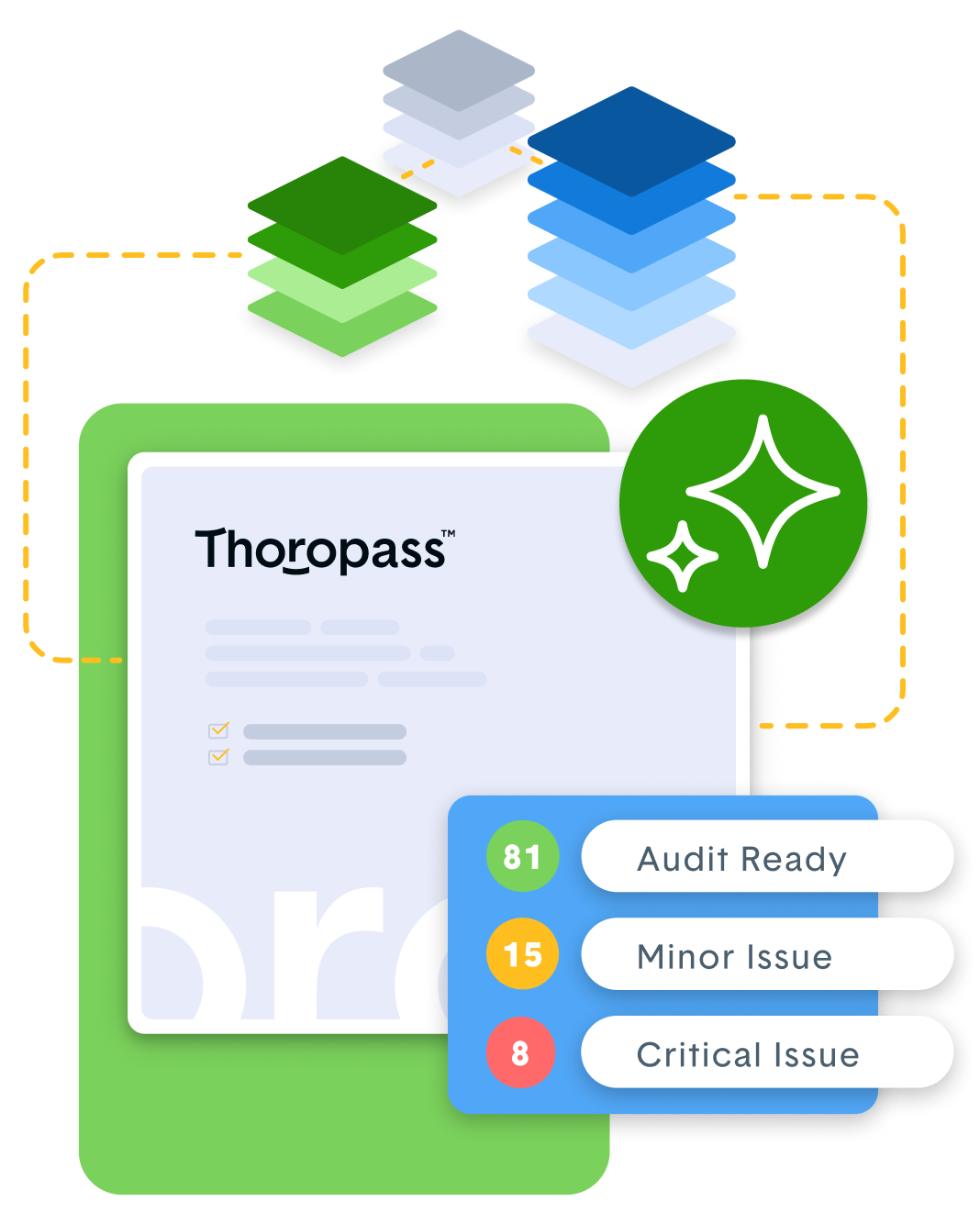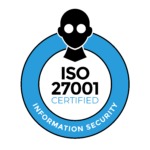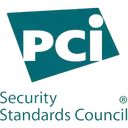The average cost of a data breach reached $4.88 million in 2024 (IBM), yet most organizations continue to rely on reactive cybersecurity approaches that fail to prevent these devastating incidents. While cybersecurity audits represent one of the most effective proactive measures for identifying vulnerabilities before they become costly breaches, many organizations remain trapped in inefficient audit cycles that drain resources without delivering proportional security improvements.
A cybersecurity audit is a comprehensive evaluation of your organization’s information security infrastructure, policies, and procedures designed to identify vulnerabilities, assess compliance with industry regulations, and strengthen your organization’s security posture against evolving cyber threats.
Key takeaways
- Cybersecurity audits prevent costly breaches by identifying vulnerabilities proactively, with the average data breach costing $4.88 million compared to annual audit investments of $50,000-$200,000 (IBM)
- Traditional audit approaches create operational friction through manual processes, endless revision cycles, and unpredictable costs, but purpose-built compliance platforms eliminate these pain points
- Multi-framework strategies maximize return on investment by leveraging overlapping requirements to achieve multiple certifications through streamlined, single-audit processes
What is a cybersecurity audit?
Core definition and objectives
A cybersecurity audit provides a comprehensive assessment of your security posture across all organizational layers, from technical infrastructure to administrative policies. Unlike basic vulnerability scans or security assessments, cybersecurity audits examine the effectiveness of your entire security ecosystem against industry standards and regulatory requirements.
The primary objectives include:
- Proactive identification of vulnerabilities and compliance gaps before they can be exploited by threat actors
- Evaluation of security controls effectiveness against established industry benchmarks
- Validation that your security investments align with your organization’s risk tolerance and business objectives
Types of cybersecurity audits
Organizations typically encounter four main categories of cybersecurity audits, each serving distinct strategic purposes:
- Compliance audits focus on meeting specific regulatory requirements such as System and Organization Controls 2 (SOC 2), Health Insurance Portability and Accountability Act (HIPAA), or Payment Card Industry Data Security Standard (PCI DSS). These audits verify that your organization meets mandatory security standards for your industry or business partnerships.
- Risk assessment audits provide a comprehensive analysis of potential threats, vulnerabilities, and their business impact. These evaluations help prioritize security investments based on quantified risk levels rather than generic security recommendations.
- Penetration testing audits simulate real-world attack scenarios to test your security controls under actual threat conditions. These audits reveal how well your defenses perform against sophisticated adversaries.
- Operational security audits examine how effectively your team implements security policies and procedures in daily operations. These reviews identify gaps between documented security protocols and actual practice.
Why are cybersecurity audits important for your business?
The business case for regular audits
The financial mathematics of cybersecurity audits strongly favor proactive investment over reactive incident response. While the average cybersecurity audit costs between $50,000 and $200,000 annually, the average data security breach costs organizations $4.88 million—a 24:1 cost differential that makes audit investment financially compelling.
Beyond direct financial protection, cybersecurity audits ensure regulatory compliance and penalty avoidance. Organizations subject to regulations like HIPAA face fines up to $2 million per violation, while General Data Protection Regulation (GDPR) penalties can reach 4% of annual global revenue.
Customer trust and reputation protection represent increasingly critical business drivers. Research indicates that 83% of consumers will stop purchasing from companies that experience data breaches, while 21% never return as customers. Demonstrating robust security through regular audits helps maintain customer confidence and competitive positioning.
The strategic advantage of demonstrated security maturity extends beyond risk mitigation. Organizations with strong security audit programs often secure better insurance rates, preferred vendor status with security-conscious partners, and enhanced valuation during mergers and acquisitions.
Common audit triggers and frequency recommendations
Most organizations should establish annual baseline auditing as the minimum standard for maintaining adequate security oversight. This frequency provides sufficient coverage for identifying emerging vulnerabilities while avoiding audit fatigue.
Organizations in highly regulated industries require quarterly audit cycles to meet compliance obligations. Financial services firms subject to PCI DSS requirements, healthcare organizations governed by HIPAA, or federal contractors following Federal Information Security Management Act (FISMA) standards typically cannot extend audit intervals beyond three months.
Event-driven audits become necessary following significant infrastructure changes, security incidents, or merger and acquisition activity. Any substantial modification to your technical environment or business structure can introduce new vulnerabilities requiring immediate assessment.
Continuous monitoring between formal audits helps maintain security posture and identify emerging threats. This approach prevents organizations from operating with false security assumptions during interim periods.
What’s the difference between internal and external cybersecurity audits?
Internal audit advantages and limitations
Internal cybersecurity audits leverage your team’s institutional knowledge and intimate understanding of business processes to conduct cost-effective security assessments. Internal auditors can access systems and personnel more easily, enabling more frequent reviews without external coordination overhead.
However, internal audits face significant limitations, including potential bias, resource constraints, and limited specialized expertise. Internal teams may lack objectivity when evaluating systems they designed or maintain, while competing priorities often prevent thorough audit execution.
Internal audits work best for ongoing monitoring, policy compliance verification, and preliminary vulnerability identification between comprehensive external reviews.
External audit benefits and considerations
External cybersecurity audits provide objectivity and specialized expertise that internal teams cannot replicate. Third-party auditors bring extensive cross-industry experience, advanced toolsets, and industry benchmarking capabilities that deliver comprehensive security assessments.
External audits also provide greater credibility with stakeholders, customers, and regulatory bodies. Independent validation carries more weight in business partnerships, compliance documentation, and risk management reporting.
Traditional external audit approaches, however, often create operational friction through manual processes, poor communication with external auditors, and unpredictable timelines that can extend 6-12 months with multiple revision cycles.
The modern solution: Purpose-built compliance platforms
Purpose-built compliance platforms like Thoropass eliminate traditional audit friction by streamlining evidence collection, automating routine processes, and providing transparent communication channels between auditors and internal teams.
These platforms offer multi-framework capabilities that support simultaneous compliance efforts, enabling organizations to achieve multiple certifications through a single audit process. Instead of conducting separate SOC 2, ISO 27001, and HIPAA audits, organizations can leverage overlapping requirements to maximize efficiency.
“The difference between traditional audits and purpose-built platforms is like comparing manual spreadsheet tracking to automated project management. When you eliminate the coordination overhead and provide real-time visibility, audits transform from painful exercises into collaborative partnerships that actually improve security.” – Leith Khanafseh, Managing Audit Partner, Thoropass
Experienced compliance experts guide organizations through predictable, structured audit processes that eliminate endless revision cycles. Transparent project management and real-time collaboration tools ensure all stakeholders maintain visibility into audit progress and requirements.
[insert product UI image]
How do you prepare for a cybersecurity audit?
Pre-audit planning and scoping
Conducting a cybersecurity audit successfully begins with clearly defined objectives and success metrics that align with your organization’s strategic priorities. Whether pursuing initial compliance certification, maintaining existing credentials, or addressing specific security concerns, explicit goal-setting guides resource allocation and scope definition.
Asset inventory and risk prioritization provide the foundation for effective audit scoping. Organizations must catalog critical systems, sensitive data repositories, and high-value intellectual property to ensure audit coverage addresses the most important security concerns.
Stakeholder alignment and resource allocation prevent audit delays and scope creep. Designating dedicated project coordinators, securing executive sponsorship, and establishing clear communication protocols ensure smooth audit execution.
Documentation and evidence organization represent the most time-intensive preparation phase. Organizations should compile security policies, incident response procedures, vendor agreements, and technical documentation well before audit commencement.
Multi-framework considerations
Modern organizations often require compliance with multiple regulatory standards simultaneously. Identifying overlapping requirements across different frameworks enables more efficient audit processes and reduces redundant effort.
Evidence mapping for multiple compliance objectives allows organizations to satisfy SOC 2 Type II requirements while simultaneously addressing ISO 27001 or HIPAA obligations. Many security controls serve multiple regulatory purposes when properly documented and implemented.
Platform-based approaches for evidence management streamline multi-framework compliance by centralizing documentation, automating evidence collection, and mapping individual controls to multiple regulatory requirements. This approach transforms compliance from a reactive burden into a strategic competitive advantage.
“Most security controls satisfy multiple regulatory requirements simultaneously, but traditional audit approaches fail to capitalize on these overlaps. Organizations shouldn’t need separate SOC 2, ISO 27001, and HIPAA audits when 80% of the evidence requirements overlap.” – Matt Udicious, Director InfoSec Assurance, Thoropass
What are the steps in a comprehensive cybersecurity audit process?
Phase 1: Assessment and discovery
The assessment and discovery phase establishes a comprehensive understanding of your organization’s security landscape through systematic analysis of technical infrastructure, policies, and procedures.
- Asset inventory and data classification mapping identify all internal systems, applications, and data repositories within the audit scope. This process reveals shadow IT installations, unauthorized cloud services, and unmanaged endpoints that could introduce security vulnerabilities.
- Risk landscape analysis and threat modeling examine the specific threats facing your organization based on industry, geographic location, and business model. This analysis helps prioritize security controls based on actual risk exposure rather than generic recommendations.
- Policy documentation review and gap identification compare existing security policies against regulatory requirements and industry best practices. This review identifies areas requiring policy updates, additional procedures, or enhanced controls.
- Technical infrastructure scanning and vulnerability assessment use automated tools and manual techniques to identify system weaknesses, configuration errors, and missing security patches across your environment.
Phase 2: Testing and validation
Testing and validation phases verify that documented security controls function effectively under real-world conditions and meet regulatory requirements.
- Security control effectiveness testing examines whether implemented controls actually prevent, detect, or respond to security threats as designed. This testing often reveals gaps between documented procedures and operational reality.
- Access management and privilege validation reviews user accounts, permissions, and authentication mechanisms to ensure appropriate access controls. This review identifies excessive privileges, orphaned accounts, and weak authentication practices.
- Incident response procedure verification tests your organization’s ability to detect, contain, and recover from security incidents. This testing often includes tabletop exercises and simulated attack scenarios.
- Compliance requirement mapping and evidence collection documents how specific security controls satisfy regulatory obligations. This process creates the documentation foundation for compliance certification.
Phase 3: Analysis and reporting
Analysis and reporting synthesizes audit findings into actionable recommendations that align with business priorities and regulatory requirements.
- Risk prioritization using quantitative impact assessments helps organizations allocate limited security resources to the most critical vulnerabilities. This analysis considers both likelihood and business impact to guide remediation efforts.
- Remediation roadmap development provides specific implementation guidance, timelines, and resource requirements for addressing identified vulnerabilities. Effective roadmaps balance security improvements with operational considerations.
- Executive summary preparation translates technical findings into business language that enables informed decision-making by leadership teams. These summaries focus on risk reduction, compliance status, and strategic recommendations.
- Certification pathway recommendations outline steps for achieving desired compliance certifications based on the current security posture and identified improvements.
Post-audit remediation strategies
Post-audit remediation transforms audit findings into measurable security improvements through the systematic implementation of recommended controls and procedures.
Organizations should prioritize remediation efforts based on risk severity, regulatory requirements, and available resources. Critical vulnerabilities requiring immediate attention take precedence over lower-impact improvements.
Effective remediation includes timeline development, resource allocation, and progress tracking mechanisms that ensure consistent implementation. Regular check-ins and milestone reviews prevent remediation efforts from stalling.
Continuous improvement and monitoring
Continuous improvement extends audit value beyond point-in-time assessments through ongoing monitoring, regular control testing, and adaptive security measures.
Automated monitoring tools provide real-time visibility into security control effectiveness and emerging threats. These systems enable proactive threat response rather than reactive incident management.
Regular control testing between formal audits maintains security posture and identifies degradation before it becomes critical. This approach prevents organizations from operating with false security assumptions.
What are the biggest cybersecurity audit challenges?
Eliminating audit fatigue and endless revision cycles
Traditional cybersecurity audits often trap organizations in exhausting cycles that consume months of time without delivering proportional value. The root causes include manual evidence collection processes that require extensive internal coordination, poor stakeholder communication that creates confusion and delays, and scope creep that expands audit requirements beyond initial agreements.
These traditional pain points manifest in 6-12 month audit cycles with unpredictable costs that can double or triple initial estimates. Organizations experience audit fatigue as teams struggle to balance daily operations with extensive audit support requirements.
Thoropass addresses these challenges with our platform that automates evidence collection, provides real-time collaboration tools, and maintains predictable timelines. The platform eliminates manual coordination overhead while ensuring transparent communication between all stakeholders.
Breaking down audit silos and improving transparency
Traditional audit approaches often operate in silos that prevent effective collaboration between auditors and internal teams. This lack of transparency creates uncertainty about audit progress, requirements, and expectations.
Manual processes typically require over 200 hours of internal resource allocation per audit, with much of this time spent on administrative coordination rather than strategic security improvements. Teams waste significant effort on redundant documentation requests and unclear requirements.
Thoropass provides integrated platforms that offer complete visibility into audit progress, expert guidance throughout the process, and streamlined communication channels. This approach transforms audits from opaque, frustrating experiences into collaborative partnerships that deliver clear value.
How will cybersecurity audits evolve in the future?
The future of cybersecurity audits centers on technology-enabled transformation that reduces manual effort while improving security outcomes. Artificial intelligence and automation will increasingly handle routine vulnerability detection, pattern recognition, and evidence collection tasks that currently consume significant human resources.
Real-time compliance monitoring platforms will shift organizations from periodic audit cycles to continuous security assessment. These systems will provide ongoing visibility into compliance status and automatically alert teams to emerging risks or control failures.
Integrated multi-framework management will become standard practice as organizations seek efficiency gains from overlapping compliance requirements. Platforms that automatically map evidence to multiple regulatory frameworks will eliminate redundant audit work.
Predictive risk analytics and modeling will help organizations anticipate security threats and compliance challenges before they materialize. These capabilities will enable proactive security investments rather than reactive incident response.
Thoropass continues advancing these capabilities through comprehensive platform development that integrates artificial intelligence, real-time monitoring, and multi-framework intelligence. The platform already delivers many future-focused capabilities that position organizations for evolving compliance landscapes.
Conclusion: Proactive security posture > reactive incident response
A thorough cybersecurity audit represents essential investments in organizational resilience, but traditional approaches often create more friction than value. The evolution toward purpose-built compliance platforms eliminates longstanding audit pain points while delivering superior security outcomes.
Moving from reactive incident response to proactive security posture requires strategic thinking that views compliance as a comprehensive security ecosystem rather than a checkbox exercise. Organizations that embrace this perspective gain competitive advantages through demonstrated security maturity, customer trust, and operational efficiency.
The future belongs to organizations that leverage technology-enabled compliance strategies to achieve multiple certifications through streamlined processes. This approach transforms compliance from a cost center into a strategic differentiator that supports business growth and customer confidence.
More FAQs
Can we use the same audit evidence for multiple compliance frameworks?
Yes, multiframework compliance strategies leverage overlapping requirements across different frameworks to maximize efficiency. Many security controls satisfy multiple regulatory standards simultaneously—for example, access management procedures often address SOC 2, ISO 27001, and HIPAA requirements. Compliance platforms like Thoropass automatically map evidence to multiple frameworks, enabling organizations to achieve several certifications through a single audit process rather than conducting separate audits for each standard.
Why do traditional audits often result in endless revision cycles?
Traditional audits create revision cycles through manual processes, poor communication, and unclear expectations. Auditors often request additional evidence or clarification multiple times because initial requirements weren’t clearly defined or documented. Manual coordination between multiple stakeholders leads to miscommunication and repeated work. Purpose-built platforms eliminate these issues by providing clear requirements upfront, automating evidence collection, and maintaining transparent communication throughout the audit process.
How much should we budget for an annual cybersecurity audit?
Cybersecurity audit costs typically range from $50,000 to $200,000 annually, depending on organizational size, complexity, and compliance requirements. Traditional approaches often exceed initial estimates due to scope creep and inefficient processes. Organizations pursuing multiple certifications through separate audits can spend $300,000 or more annually. Purpose-built compliance platforms provide predictable pricing and multi-framework capabilities that reduce total compliance costs while improving outcomes. The investment represents significant value compared to average data breach costs of $4.88 million.

Related Posts
Stay connected
Subscribe to receive new blog articles and updates from Thoropass in your inbox.
Want to join our team?
Help Thoropass ensure that compliance never gets in the way of innovation.













.png)